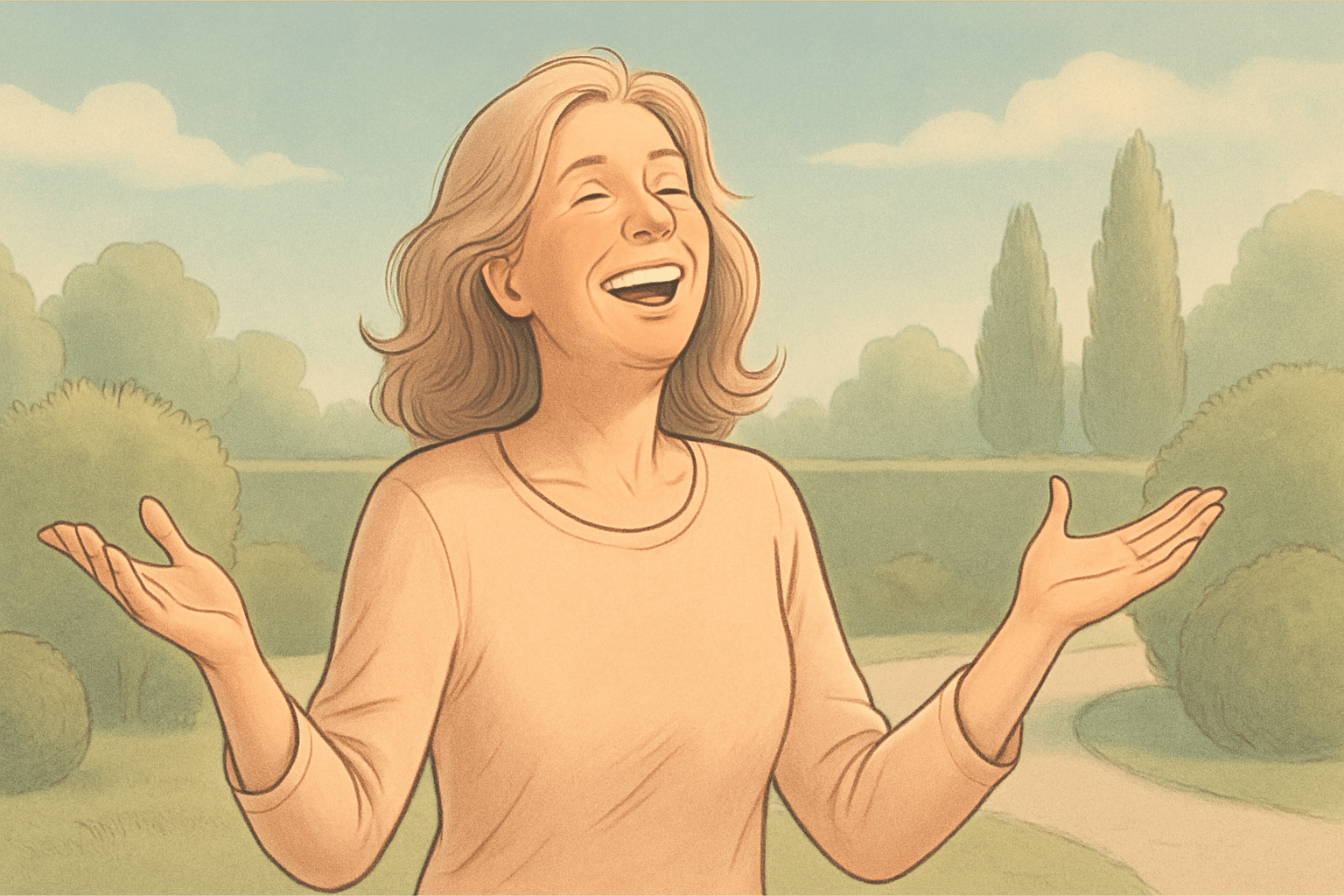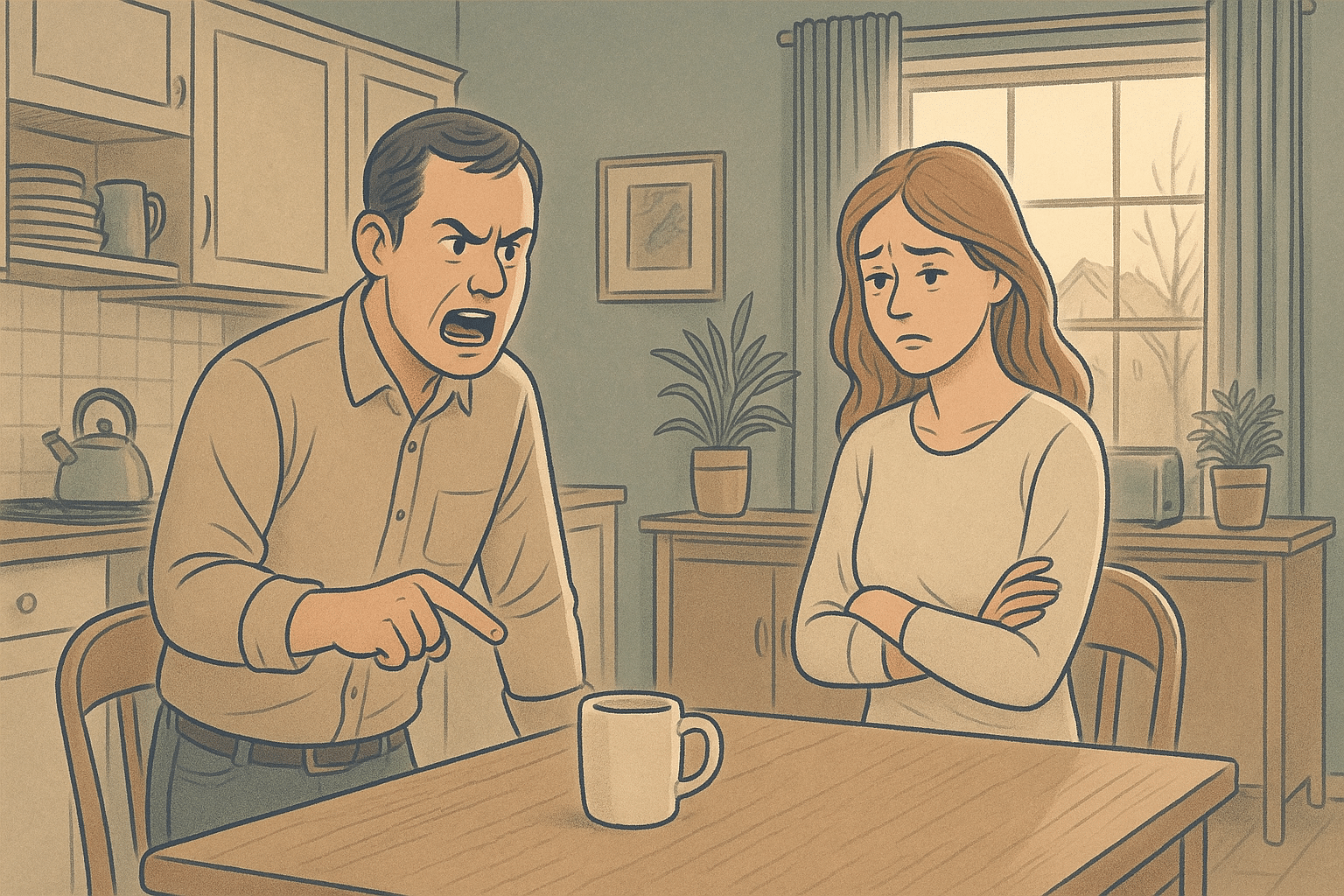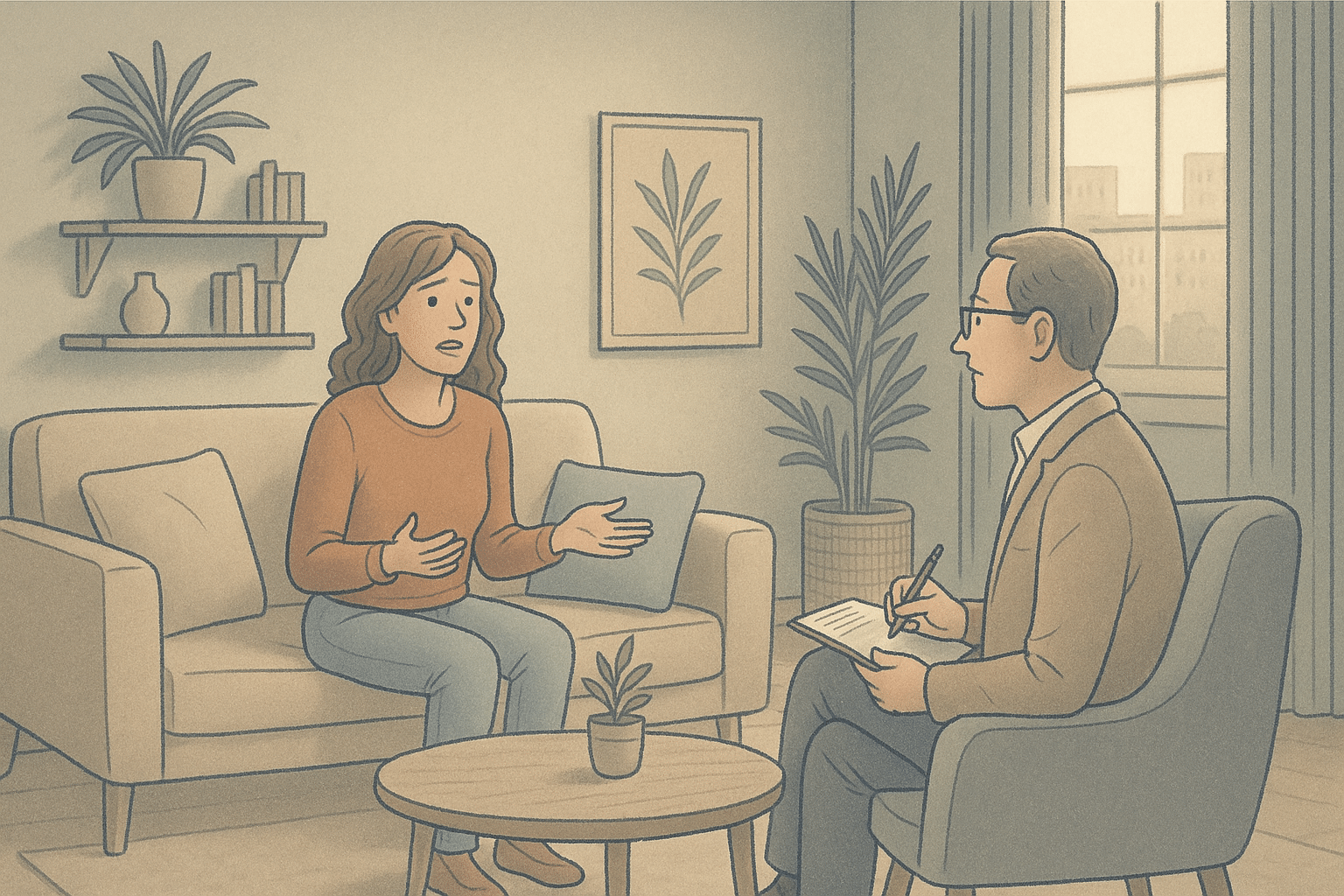Key Takeaways
- Bipolar disorder involves distinct episodes of mania and depression that typically last weeks to months, while Borderline Personality Disorder (BPD) features rapid mood shifts that can occur within hours or days.
- BPD is primarily triggered by interpersonal conflicts and fear of abandonment, whereas bipolar mood shifts often occur spontaneously or due to sleep disruption, stress, or seasonal changes.
- Medication (mood stabilizers and antipsychotics) forms the foundation of bipolar treatment, while psychotherapy, particularly Dialectical Behavior Therapy (DBT), is the gold standard for BPD treatment.
- Both conditions can be misdiagnosed as each other due to overlapping symptoms like impulsivity and mood instability, making proper assessment by mental health specialists crucial.
- At A Mission for Michael, we provide comprehensive assessment and personalized treatment plans that address the unique challenges of both disorders, even when they co-occur.
Bipolar vs BPD: Critical Difference
The pattern of mood changes represents one of the most notable differences between these conditions. In bipolar disorder, mood episodes tend to be distinct, prolonged states that represent a clear departure from the person’s baseline functioning. These episodes typically last for weeks or months and often develop gradually. When someone experiences a manic episode, they may feel euphoric, have boundless energy, need little sleep, and engage in risky behaviors like excessive spending or sexual activity.
Conversely, BPD is characterized by intense emotional reactivity and rapid mood shifts. Someone with BPD might experience several significant mood changes within a single day, often in response to external events, particularly interpersonal situations. These emotions are intense but typically short-lived, sometimes lasting only hours. The mood swings in BPD are often described as moving from feeling okay to feeling intensely negative, rather than the euphoric highs seen in bipolar mania.
The timeframe of mood episodes marks a significant distinction between these two conditions. Bipolar mood episodes typically last weeks to months. A manic episode must last at least one week to meet diagnostic criteria, while depressive episodes often continue for two weeks or longer. BPD mood swings on the other hand last for a few hours to days and rapidly change due to Interpersonal relationship triggers.
Founded in 2010, A Mission For Michael (AMFM) offers specialized mental health care across California, Minnesota, and Virginia. Our accredited facilities provide residential and outpatient programs, utilizing evidence-based therapies such as CBT, DBT, and EMDR.
Our dedicated team of licensed professionals ensures every client receives the best care possible, supported by accreditation from The Joint Commission. We are committed to safety and personalized treatment plans.
Bipolar Disorder Explained
Bipolar disorder is a chronic mental health condition characterized by extreme mood swings that include emotional highs (mania or hypomania) and lows (depression).

Bipolar disorder can either cause extreme high moods like euphoria or extreme lows like depression
These mood episodes represent a significant change from a person’s typical mood and behavior and can dramatically affect their energy levels, activity, sleep, and ability to think clearly. Between episodes, many people return to their baseline functioning, though some may experience lingering symptoms.
Types of Bipolar
Bipolar disorder isn’t a one-size-fits-all diagnosis. Instead, it encompasses several subtypes with distinct patterns of symptoms. Bipolar I disorder is characterized by manic episodes that last at least 7 days or are severe enough to require immediate hospitalization. Depressive episodes typically occur as well, often lasting at least 2 weeks. The intensity of mania in Bipolar I can lead to psychosis and frequently necessitates hospital care.
Bipolar II disorder features a pattern of depressive episodes and hypomanic episodes, but not the full-blown manic episodes that characterize Bipolar I. Hypomania is a less severe form of mania that doesn’t cause the marked impairment in functioning or psychotic features seen in full mania. People with Bipolar II often spend more time in depression than in hypomania, which sometimes leads to misdiagnosis as major depressive disorder.
Mania Symptoms
Mania is the defining feature of bipolar disorder, particularly Bipolar I. During manic episodes, individuals experience abnormally elevated mood, excessive energy, and heightened activity levels that significantly impair functioning.
Common symptoms include racing thoughts, rapid speech, decreased need for sleep, grandiose beliefs, increased goal-directed activities, and engagement in pleasurable but risky behaviors. For some, mania can escalate to psychosis, where the person loses touch with reality and experiences delusions or hallucinations.
Depression Phases
Depressive episodes in bipolar disorder closely resemble major depression, featuring profound sadness, emptiness, hopelessness, and loss of interest or pleasure in previously enjoyed activities.
Physical symptoms often accompany these mood changes, including significant changes in appetite and sleep patterns, fatigue, difficulty concentrating, and thoughts of death or suicide. The depression in bipolar disorder can be particularly severe and disabling, sometimes lasting longer than manic episodes.
What distinguishes bipolar depression from unipolar depression is its alternation with periods of mania or hypomania. This cyclical pattern is essential for proper diagnosis and treatment, as antidepressants alone can sometimes trigger manic episodes in people with bipolar disorder.
Typical Age of Onset
Bipolar disorder typically emerges in late adolescence or early adulthood, with the average age of onset being 15–25 years. However, symptoms can appear in childhood or not manifest until later in life.
The onset is often gradual, with subtle mood symptoms appearing years before the first full episode. This early stage, sometimes called prodromal bipolar disorder, may be mistaken for other conditions like anxiety, depression, or even normal adolescent mood swings.
Borderline Personality Disorder Basics
Borderline Personality Disorder (BPD) is characterized by a pervasive pattern of instability in interpersonal relationships, self-image, and emotions, along with marked impulsivity. Unlike bipolar disorder, which is episodic, BPD symptoms tend to be chronic and pervasive across different situations and relationships.

The emotional experience of someone with BPD is often described as being on an emotional roller coaster, with intense reactions to seemingly minor triggers.
BPD develops from a complex interaction between genetic vulnerability and environmental factors, particularly childhood experiences. Research indicates that many individuals with BPD experienced trauma, neglect, or invalidation during their formative years. These experiences, combined with biological predispositions to emotional sensitivity, contribute to the development of BPD’s characteristic features.
Fear of Abandonment
One of the core features of BPD is an intense fear of abandonment and rejection. People with BPD often go to extreme lengths to avoid real or imagined abandonment, which can lead to clingy behavior, constant reassurance-seeking, or preemptive rejection of others before they can be rejected themselves. This fear stems from a deep sense of unworthiness and expectation that important people will inevitably leave.
The abandonment sensitivity in BPD creates a pattern of unstable and intense relationships characterized by alternating between idealization and devaluation. A person might view someone as perfect and wonderful one day, then as completely uncaring or malicious the next, with little middle ground. This black-and-white thinking, called splitting, contributes significantly to relationship difficulties.
Identity Issues
People with BPD often struggle with a fragile or unstable sense of self. They may experience dramatic shifts in self-perception, values, goals, and even sexual identity.
This identity disturbance can manifest as chronic feelings of emptiness or feeling “hollow inside.” Without a stable sense of who they are, individuals with BPD may adopt the characteristics, mannerisms, or preferences of those around them, particularly people they admire.
Emotional Instability
Emotional dysregulation stands at the heart of BPD, with emotions that are intense, rapidly shifting, and highly reactive to environmental triggers. People with BPD often describe feeling emotions more deeply than others. What might cause mild annoyance in someone else might trigger overwhelming anger or despair in someone with BPD. This emotional intensity can make life feel like a constant crisis, with few periods of calm or stability.
Unlike the sustained mood episodes of bipolar disorder, BPD mood shifts typically last hours rather than weeks, and they’re usually triggered by interpersonal events rather than occurring spontaneously.
Relationship Patterns
Relationships often become the central struggle for people with BPD, characterized by cycles of idealization and devaluation, emotional dependency, and fear-driven behaviors. Individuals with BPD may quickly become attached to new friends or romantic partners, seeing them as perfect and the solution to all their problems. However, when inevitable disappointments occur, these same people may be just as quickly devalued and perceived as uncaring or malicious.
This rollercoaster of intense attachment and angry withdrawal can be confusing and exhausting for loved ones, who may feel they’re “walking on eggshells” to avoid triggering emotional reactions. Despite the turmoil, people with BPD typically have a strong desire for connection and can form meaningful relationships with proper treatment and support from understanding partners and friends.
Comparison Table
| Feature | Bipolar Disorder | Borderline Personality Disorder |
| Classification | Mood disorder | Personality disorder |
| Mood Pattern | Distinct episodes of mania/hypomania and depression | Chronic emotional instability with rapid shifts |
| Duration of Mood States | Weeks to months | Hours to days |
| Triggers | Often spontaneous or related to biological factors | Usually interpersonal events |
| Primary Treatment | Medication (mood stabilizers, antipsychotics) | Psychotherapy (especially DBT) |
| Core Features | Mania/hypomania, depression, cyclical patterns | Fear of abandonment, identity disturbance, emotional instability |
Diagnostic Criteria
The formal diagnostic criteria for these conditions are outlined in the Diagnostic and Statistical Manual of Mental Disorders (DSM-5). For bipolar disorder, the diagnosis hinges on the presence of distinct mood episodes, specifically, at least one manic or hypomanic episode is required for diagnosis. Bipolar I requires at least one manic episode, while Bipolar II requires at least one hypomanic episode plus at least one major depressive episode.
BPD diagnosis requires a pervasive pattern of instability in interpersonal relationships, self-image, and emotions, plus marked impulsivity. At least five of the nine specific criteria must be present, including fear of abandonment, unstable relationships, identity disturbance, impulsivity, suicidal behavior or self-harm, emotional instability, chronic emptiness, inappropriate anger, and transient paranoia or dissociation. These symptoms must be persistent over time and across different contexts.
Treatment Approaches
Medication Differences
Medication forms the foundation of bipolar disorder treatment, with several classes of drugs showing effectiveness. Mood stabilizers like lithium, valproate, and lamotrigine help prevent both manic and depressive episodes, though their effectiveness varies based on the specific bipolar subtype.
Atypical antipsychotics such as quetiapine, olanzapine, and aripiprazole can manage acute episodes and provide maintenance treatment. For bipolar depression, specific medications or combinations may be prescribed, though traditional antidepressants are used cautiously due to the risk of triggering mania.
For BPD, medications play a more supportive role and target specific symptom clusters rather than the underlying condition. No medication is FDA-approved specifically for BPD, though various classes may help manage particular symptoms.
Low-dose antipsychotics might reduce cognitive-perceptual symptoms like paranoid thinking, mood stabilizers can help with emotional instability, and antidepressants sometimes address co-occurring depression or anxiety. However, medication effects in BPD tend to be modest, and psychotherapy remains the primary intervention.
Therapy Options

A comprehensive therapy program includes individual therapy, skills training groups, phone coaching, e.t.c.
While medication is primary in bipolar treatment, certain psychotherapies significantly improve outcomes when added to pharmacological approaches. Psychoeducation helps individuals and families understand the condition, recognize early warning signs of episodes, and develop strategies to maintain stability.
Cognitive Behavioral Therapy (CBT) assists in managing negative thought patterns associated with depression and developing coping skills for symptoms. Interpersonal and social rhythm therapy (IPSRT) focuses on stabilizing daily routines and resolving relationship problems that might trigger episodes.
For BPD, Dialectical Behavior Therapy (DBT) has the strongest evidence base for treating this condition. DBT combines cognitive-behavioral techniques with mindfulness practices derived from Eastern philosophical traditions.
The “dialectical” component refers to balancing acceptance of one’s emotional experience with the need to change problematic behaviors, acknowledging that both seemingly opposite positions can be true simultaneously.
Self-Management Strategies
For bipolar disorder, maintaining regular sleep patterns, avoiding caffeine, exercising regularly, and monitoring mood can help prevent episodes. Using mood tracking apps or journals helps identify early warning signs of mood shifts, allowing for prompt intervention before full episodes develop.
For BPD, practicing mindfulness, developing healthy coping skills for intense emotions, building a support network, and maintaining structure can reduce symptom intensity. Learning to identify and challenge black-and-white thinking patterns and practicing self-validation are also valuable skills. Many individuals with BPD find that creative outlets like art, exercising, music, or writing provide healthy ways to express and process intense emotions.
Expert Bipolar and BPD Treatment at AMFM
At A Mission For Michael, we recognize that accurate diagnosis forms the foundation of successful treatment. Our experienced clinical teams conduct comprehensive assessments to distinguish between these conditions, even when they co-occur.
If you’re experiencing the prolonged mood episodes of bipolar disorder or the rapid emotional shifts of BPD, our evidence-based treatment approaches are customized to your specific needs. Our integrated care model combines the best of both worlds; psychiatric expertise for medication management and specialized therapeutic interventions like DBT for emotional regulation skills.

With locations across California, Virginia, and Washington, we provide accessible, compassionate care that addresses the complexity of mood and personality disorders.
Don’t let confusion about your diagnosis delay your path to recovery. Contact A Mission For Michael today for a comprehensive assessment and discover how our specialized approach can help you achieve lasting stability and improved quality of life.
Frequently Asked Questions
How can I tell if my mood swings are bipolar or BPD-related?
The key differences lie in duration, triggers, and patterns. Bipolar episodes typically last weeks to months and often occur spontaneously, while BPD mood shifts happen within hours or days and are usually triggered by interpersonal events. Bipolar involves distinct periods of mania/hypomania and depression, whereas BPD features chronic emotional instability with rapid reactivity to environmental cues.
Are these conditions more common in certain age groups or genders?
Bipolar disorder typically emerges in late adolescence or early adulthood, around age 25, affecting men and women relatively equally. BPD symptoms often begin in adolescence or early adulthood as well, but the condition affects women more frequently than men. Both conditions can be diagnosed in anyone over 18 who meets the specific diagnostic criteria.
What’s the difference in treatment response between these conditions?
Bipolar disorder typically responds well to mood stabilizers and antipsychotic medications, with psychotherapy as an important supplement. BPD primarily requires specialized psychotherapy like DBT, with medications playing a supportive role for specific symptoms. Treatment timelines also differ – bipolar often requires lifelong medication management, while BPD symptoms may naturally decrease with age and intensive therapy.
How does AMFM approach treatment when both conditions are present?
At A Mission For Michael, we provide comprehensive assessments to accurately diagnose both conditions when they co-occur. Our integrated treatment approach combines mood-stabilizing medications for bipolar symptoms with evidence-based psychotherapy like DBT for BPD features. Our multidisciplinary teams coordinate care to ensure that treatment for one condition doesn’t interfere with progress in addressing the other.












